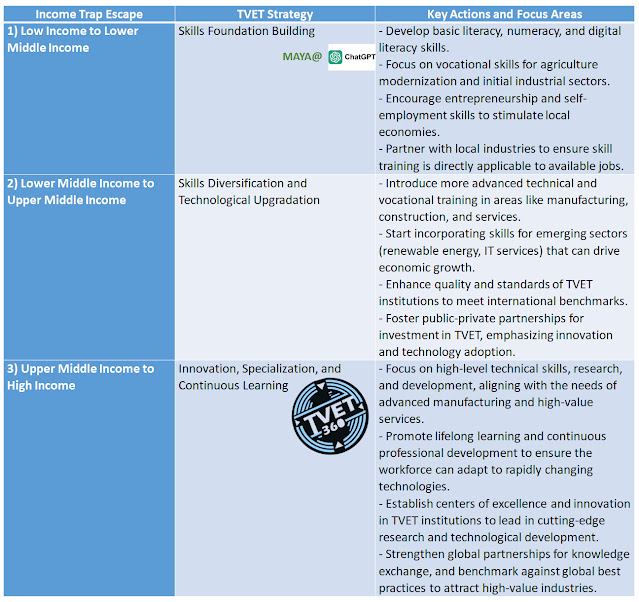13/16 - TVET and The Income Trap
 Nana Azhar
Nana Azhar
A well-designed TVET strategy can help nations escape income traps by aligning workforce skills with evolving economic needs. For low-income countries, focusing on basic literacy, vocational skills, and local industry partnerships can modernize agriculture and initiate industrial growth. As countries progress to lower-middle income, diversifying skills and upgrading technology in sectors like manufacturing and IT can drive further economic growth. For upper-middle-income countries, emphasizing high-level technical skills, lifelong learning, and innovation ensures competitiveness in advanced industries. These strategies require collaboration among governments, industries, and educational institutions to foster continuous development and adaptability, crucial for sustainable economic advancement.
TVET Strategies for Escaping Income Traps
Escaping the Low-Income Trap:
Equip individuals with skills for industrial and service sector jobs.
Improve workforce qualifications to attract foreign investment and enhance productivity.
Overcoming the Upper-Middle-Income Trap:
Prioritize innovation, high-tech skills, and lifelong learning.
Strengthen industry partnerships to align education with future job market needs.
TVET/INCOME Strategy Table

Implementing these strategies requires a concerted effort from governments, industries, educational institutions, and international partners. Transitioning from one income level to another involves upgrading skills and fostering an ecosystem that supports innovation, entrepreneurship, and relevance to global economic demands.
Thank you for your time ❤️
Subscribe to my newsletter
Read articles from Nana Azhar directly inside your inbox. Subscribe to the newsletter, and don't miss out.
Written by
